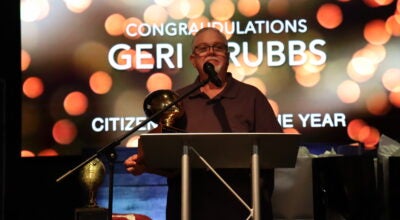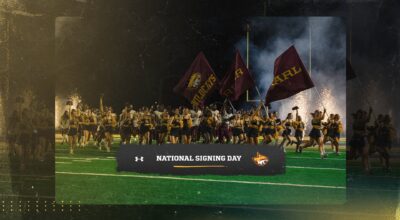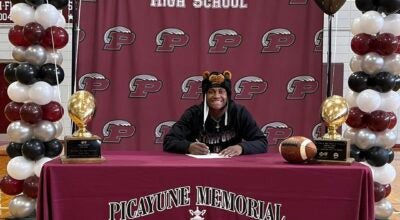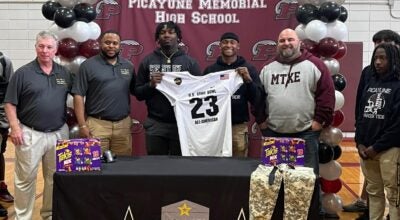Mississippi State Adds 19 Commits During Leach’s First Early Signing Period
Published 7:00 am Friday, December 18, 2020
STARKVILLE – The first early period of the Mike Leach era has been signed, sealed and delivered with 19 recruits that span eight states joining the Mississippi State football program on National Signing Day. The class includes 12 prospects on offense and seven recruits on the defensive side.
The complete class includes 15 high school signees, three junior college prospects and one four-year transfer and can be found at HailState.com/NSD21.
The 19-person class represents seven states: Mississippi (7), Florida (4), Texas (3), Alabama (1), Georgia (1), Louisiana (1), and Tennessee (1), along with one prospect from Canada. The position breakdown on offense includes five offensive linemen, four wide receivers, two quarterbacks and one running back. On defense, State adds four linebackers, two defensive linemen and one defensive back.
Each of the five Mississippi high school products inked by MSU during the early signing period were ranked among the top 20 recruits in the state. Of the 19 signees, four were rated among the top 25 nationally at their respective positions, while all three of the junior college signees ranked among the top 100 national recruits and among the top 10 at their position.
The four-star trio of wide receivers Anthony Harmon and Teddy Knox, and quarterback Sawyer Robertson headline the class. And a trio of highly-ranked junior college products also join the fold in offensive linemen Nick Jones and Carson Williams, and linebacker DeShawn Page.
The fifth-highest ranked offensive recruit in MSU history, Robertson is the second-highest offensive skill player to ink with the Bulldogs according to 247Sports, trailing only running back Jerious Norwood in 2002. Offensive linemen Charles Cross, Donovan Davis and Damien Robinson are also among the top five offensive recruits.
Robertson ranks among the Texas High School all-time leaders in career completions (No. 8; 813), career touchdown passes (No. 10; 135) and career passing yards (13th; 11,302). Daniel Greek, another Texas signal caller, will enroll early after playing at Liberty Christian School.
Running back Simeon Price joins a talented group of wide receivers in Leach’s Air Raid system. The wide receiving corps is headlined by the four-star duo of Harmon and Knox, who each rank among the top 20 nationally at the position. Jacobi Moore joins the group as a top 10 in-state recruit from Harrison Central High School, while Rara Thomasposted back-to-back 900-yard receiving seasons for Eufaula High School in Alabama.
Along with Jones and Williams from the junior college ranks, the prep trio of Canon Boone, Gabe Cavazos Jr. and Albert Reese IV have the size and ability to protect along the offensive line. Georgia product Tre’von Marshall and transfer Randy Charlton will line up across from them on the defensive line next season.
The lone defensive back in the group is Mississippi product Corey Ellington from Holmes Central High School. He will play behind JUCO linebacker Page and the prep linebacking trio of John Lewis, Nic Mitchell and Timar Rogers. Mitchell and Rogers join the fold from Florida, while Lewis is a hard-hitting, in-state linebacker from Germantown High School.
Mike Leach – National Signing Day Press Conference
Opening Statement
ML: Well, you bring up a great point because this is one of the exceptions. I actually do usually make an opening statement in this one. First of all, I’m very proud of our staff, Dave Emerick in particular, for coordinating the recruiting effort. I thought our coaches hit the ground running, worked really hard, especially with the challenges of not being able to see too many people face to face. In this class, obviously we’re not done yet. That’s by design. A portion of that is by design. I think this is a volatile year and there’s going to be some more quality guys out there. We wanted to have a little bit of flexibility there. In particular, I thought we fortified the offensive line, fortified the receivers. We’ve got some guys we’re still working on defensively. I was impressed with some of those guys in the front. Our class this year, of course, is Canon Boone, offensive lineman, 6-foot-4, 280 pounds. He might be even bigger than that, from Kemah, Texas, Dickinson High School. Gabe Cavazos, offensive lineman, 6-foot-4′, 280 pounds, Lake Cormorant Mississippi, and went to Lake Cormorant High School. Randy Charlton, defensive lineman, 6-foot-4, 250 pounds with great feet. From Goulds, Florida, Miami Southridge [high school] and transferred from UCF. Corey Ellington a [defensive back], 6-foot-3, 180 [pounds], from Lexington, Mississippi, and Holmes County Central. He is a nice, long DB. Daniel Greek, he may be bigger than this too, at 6-foot-4, 220 pounds from Argyle, Texas. He went to Liberty Christian. Antonio Harmon, a wide receiver at 6-foot-3, 200 pounds. From Kosciusko, Mississippi, he went to Kosciusko High School. Nick Jones, offensive lineman, 6-foot-3, 275 [pounds] from Byhalia, Mississippi. He went to East Mississippi Community College. Teddy Knox, a wide receiver, 5-foot-11, 170 pounds from Baton Rouge, Louisiana, originally. He [finished high school] at the Woodlands down around Houston [Texas]. He is an extremely fast player. John Lewis, linebacker, 6-foot-3, 220 pounds in Canton, Mississippi. He went to Germantown. Jacobi Moore wide receiver, 6-foot-2, 200 pounds from Gulfport, Mississippi and went to Harrison Central. DeShawn Page, linebacker, 6-foot-2, 225 pounds from Knoxville, Tennessee. He went to East Mississippi Community College. Simeon Price, a running back, 6-foot, 210 pounds and very versatile. He can play a lot of positions and he’s the type of guy you can move around, as far as sticking him in the slot, sticking him in the backfield and moving him back and forth to either one. [Price] Is 6-foot, 210 pounds out of Pensacola Florida and West Florida [High School]. Albert Reese is an offensive lineman, 6-foot-7, 315 pounds, from Edmonton, Alberta. Went to high school in Clearwater, Florida at Clearwater International Academy. Sawyer Robertson, quarterback, 6-foot-4, 200 pounds from Lubbock, Texas. He went to Lubbock Coronado. Timar Rogers, linebacker, 6-foot-1, 195 [pounds] from Delan, Florida and went to Deland High School. Carson Williams, offensive lineman, 6-foot-5, 300 pounds from Forest, Mississippi and went to Mississippi Gulf Coast [Community College]. Okay, any questions from there?
Q: Do you feel generally satisfied with this group and what’s your plan for those spots remaining?
ML: Well we’re still recruiting some guys. Also, some may be announced later too. We’re going to see what unfolds as the dust settles in January and obviously there’s the transfer portal as well.
Q: What do you attribute today’s flips to and how do you plan on filling those spots that would’ve been taken by MJ Daniels and Malik Nabers?
ML: I think we’ve got our eye out for other guys. We’re in dialogue with other people as well at both of those positions, and that continues. Also, in particular with the DBs, we may look at some transfers as well.
Q: With more guys from Texas and Florida than MSU has had in the past 20 years, how much was geography a factor?
ML: You know, I think it’s a product of two things. The first thing is we try to shoot for a four-hour radius of Starkville. I would say that’s our general approach and where we try to be most aggressive. You know that four-hour radius, because then people can come back and forth and go to the game. Also in the Southeast region where people kind of have an identity with the SEC it spreads out from there. Then there’s a certain number of players nationally that may like what we do or may be familiar with coaches on our staff, things of that nature. We’re certainly not going to close that door, but they have to have a genuine interest to come here and be a part of what we’re doing. We don’t want to exclude it as a resource by any stretch, but most-aggressively the four-hour radius from here, which some of those Florida guys are. Certainly Simeon [Price] is.
Q: Sawyer Robertson and Daniel Greek were some of your first commits here. What did you see in those guys?
ML: Very good passers, great arms, tall guys and both are going to get even bigger. Both had a pretty significant body of work as far as their success in high school. They weren’t just kind of one-year-wonder kind of guys.
Q: More specifically on Sawyer, what about him impressed you and what do you think his ceiling is?
ML: Well he’s very efficient. The ball comes off his hand quickly. He’s got good feet in the pocket. Good to the point where he’s fairly mobile. His touchdowns to interception ratio is off the charts. And he’s still playing. I think he plays Friday. It’s either Friday or Saturday.
Q: How many of these guys do you expect to contribute right away.
ML: Well the JC guys and the transfers, you hope that they can contribute right away. The freshmen, you never know. Based on this year, it looks like they could all play at the rate we’re playing freshmen. I’ve been historically terrible at predicting whether freshmen will play early, and I think most people are. Whoever’s your most-talented freshman in the class may go on to be an All-American or something like that, but it may take them a year or two to get adjusted and settle in. I’ve always found that the guys that contribute early are those that do what got them there. They’re not afraid to go in and do what got them there, and they don’t struggle with that college adjustment thing. One guy that’s kind of like that here now is Jaden Walley. Walley didn’t break stride from high school. I think just having the presence of mind and the comfort and confidence of knowing that, ‘Hey I wouldn’t be here if my abilities weren’t pretty good, and they recruited me and my abilities.’ What I can already do, I need to do that full speed and then build on it as I go. Those are the guys that contribute first. Sometimes, it’s just the adjustment. I think a quick way to say it is some guys make a little more out of being in college than it truly is, initially. They just need to settle down and play. The ultimate example that I’ve seen over the years is you’ll have a receiver that’s got great hands and the ball’s flying through the air, and in high school, just incredible hands, great hands. Okay, now it really doesn’t matter if that ball’s flying in the air from a Jugs machine, an all-pro quarterback or a 12-year-old that can at least put a little zip on the ball. Ball goes through the air, catch it, you know. Then you’ll see them go to college. Then they’ll struggle with their hands for a period of time where nothing’s really changed. I’ve had guys that tear it up catching the ball all through college. Then they’ll go to the NFL and they’ll drop it for a period of time. The only thing that’s changed is what’s running through their head because the ball is flying through the air. Put your hands up and catch it.
Q: Was there anything different about recruiting in the SEC?
ML: You don’t have to travel nearly as far, which I would say that’s a good thing. This year wasn’t really a perfect sample year from the standpoint that we’re locked away here in our complex, and to varying degrees they’re locked away in their hometown, doing the thing from there, on this whole remote stuff where you know. Just like we talked about the other day, you’re cheerfully locked away in your cubby hole looking at a screen all the time. It’s closer, more players know players on your team and know players out there getting recruited. I think that that can make it volatile sometimes. Somebody out there up to some high jinks, I don’t know for sure. Of course anytime something doesn’t go your way, people sometimes will fall back on that, whether it’s true or not. The most important thing with recruiting, I think is always the most important thing is persistence and people. People go somewhere to play football, where they want to work. I think it starts with the people that they have the opportunity to work with and things like that. Just like recruiters, I’ve found them to come in all shapes and sizes. Everybody thinks it’s the sharp, slick, really articulate guy. I’ve had some guys that were just outstanding recruiters that no one would ever guess. I think persistence is really key.
Q: After today do you still feel like your class is ahead of schedule or do you feel pressured to get somewhere else by February?
ML: We have several more scholarships to give. I would say by May, because some of the transfer stuff happens later. I guess I see it this way. At this point, our class is what it is. There’s no real ahead of schedule at this point now. Just the objective of filling the other scholarships. We want a number of them filled by February. Still, I wouldn’t rule out keeping a few back and seeing what transpires as far as transfers and things after spring football.
Q: How satisfied are you with the recruiting process considering the changes and not being able to be with them in person?
ML: Well, you know there was a number of meetings and stuff around here. In the end, it seemed like most schools did it about the same way. You know, how you could really show your program and kind of present, get the sizzle in the thing as far as ‘Hey this is a great place and a great opportunity.’ You have to do it all without being face to face. So there was just a certain amount of kind of graphics and meetings on the remote, computer stuff, just sort of the virtual computers and stuff the best you could. It was tight enough with regard to people couldn’t come on campus and things like that that all you could really do was have pretty good graphics and conversations with your staff and things like that with who you were recruiting.
Q: How do you see Sawyer Robertson balancing committing to play both baseball and football?
ML: We’ll just have to see what happens. It’s challenging. I’ve had guys do it though. Our starting receiver was also the center fielder there at Texas Tech, but it is tough. The sports are hard enough but then the academics in the midst of it, you know.
Q: What was it about Simeon Price that makes him a good fit for your scheme?
ML: Among other things I guess the player that was an example, and we saw a lot of him in the Big 12. He’s kind of a Jeremy Maclin-kind of guy, if you remember him. He played at Missouri and then they’d move him all over the field. Just that kind of versatility.
Q: What do you think about Antonio Harmon?
ML: First of all he’s a big guy. We like that. He’s a big target. That’s the other thing with receivers, besides the fact we’re able to get some speed. We also got some size. I think he’s a real good example of that. You know, just a very coordinated, fluid guy with good ball skills and fairly aggressive about going to get it.
Q: How do you project these five offensive linemen filling in with the whole group?
ML: Get as many tackles as you possibly can and then play the best five. Then you just figure out the best way to get them on the field. I think all these guys will be able to put on good, positive weight. Generally, they already have pretty good feet. That’s why you kind of like recruiting tackles because a lot of times they have good feet. In high school, in many, many cases, their better offensive lineman plays tackles, either one.
Q: In terms of the footwork is that what you like as far as pass protection?
ML: I don’t think there’s any substitute for footwork. I think you always need that. You want it as good as you can get. Around here we’re kind of psycho about making these guys jump rope in the off season. We didn’t get a full dose of that this year with it being hit and miss. We’re constantly trying to develop feet. I’d say probably more than anything.
Q: After he signed an extension, how big is it to have Zach Arnett on your staff?
ML: Well we’re just really excited about the job that he does. He brings a lot of energy and enthusiasm. He’s aggressive. We want Zach to be here for a long time.





